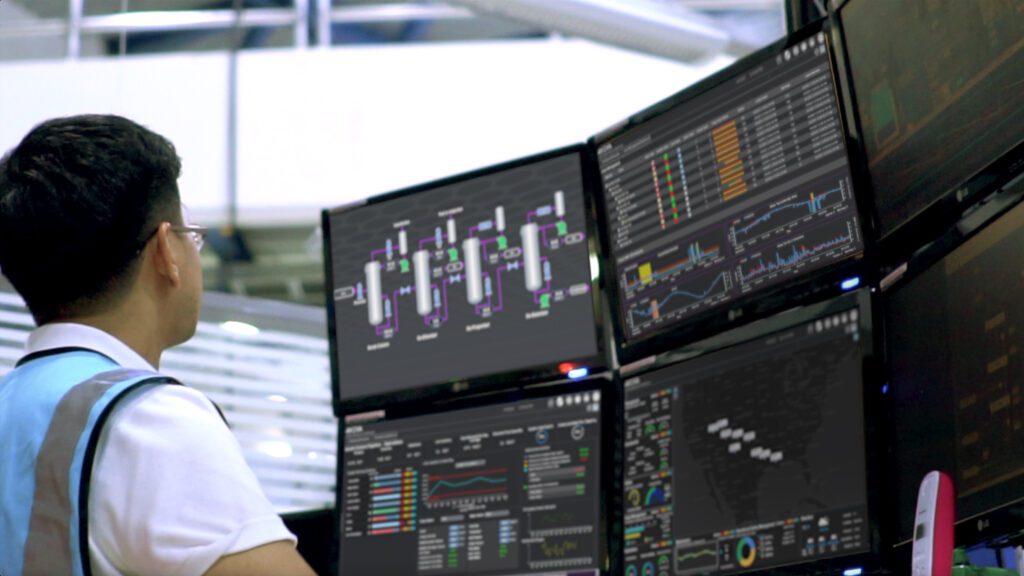
Energy and power have always been critical components of operational performance, but they are now becoming essential elements of companies’ digital transformations. Industrial companies in the manufacturing, mining, cement, oil and gas, and utilities industries are facing a broad array of pressures to increase performance and reduce costs. Among the most urgent of these pressures is the need to be intelligent about energy usage. Whether to reduce business risk through the coming energy transition, to reduce the cost of production, or to minimize the impact on the environment, visibility is the first step to understanding how to change behavior. For companies that do this smartly, the emphasis on power will have broad-reaching benefits to multiple use cases already in production.
Yet many companies are wandering in the dark. For some industries, such as mining, the sources of power are changing as companies undergo electrification. For other industries like manufacturing, there may be no capabilities in place to monitor and manage power and energy systems today. I have seen many technology trends unfold in the years I have studied these industries, and the one clear pitfall to avoid is creating technology initiatives in a vacuum. If companies desire to truly be intelligent about energy usage, it is imperative that they pursue this goal as part of a broader transformation strategy to ensure they are maximizing the potential value of the data these systems create.
For example, companies may find themselves today with separate control systems for electrical systems and asset systems. However, as the relationship between power and process is more closely scrutinized, it will become valuable to run both sets of capabilities off a single control system. In this way, steps are reduced both in upfront investment as well as ongoing maintenance, all while being able to more easily adapt asset control processes to optimize energy usage without custom integration. In another example, companies are seeing significant value from advanced asset management capabilities resulting from new predictive analytics and cloud-based remote asset monitoring and management. When these capabilities extend to the monitoring and management of power systems, the potential reduction of unplanned downtime is extended even further, all while providing a more holistic view of the entire footprint of assets responsible for operational performance. In short, power and energy systems are becoming more critical assets and deserve to be brought into the fold of broader business initiatives.
My guidance to industrial enterprises is simple: Incorporate energy and power data throughout your broader digital transformation projects such as creating a data fabric, building the next generation of data-driven automation, and predictive asset management. Running operations is a multi-disciplined and multi-faceted process with many parts working in orchestration. For real change to be driven in operations, energy and power visibility, analysis, and action needs to be inherent to the performance management and process improvement activities that take place.
This is easier said than done due to the disparate technological landscape in operations and because many companies have historically under-appreciated the importance of energy and power system management. However, to navigate a new world that will be lean from an energy standpoint as well as predictive and adaptive in process and performance optimization, the role of energy and power systems must be elevated in companies’ operational transformation strategies.
To learn more about how power and energy data improve operational performance outcomes and strengthen digital transformation use cases in industrial operations, read the IDC Spotlight paper, “The Role of Energy in Advancing Industrial Process Performance and Transformation,” sponsored by Schneider Electric.
Message from the Sponsor
Digitization helps manufacturing, oil & gas, utilities, and mining and minerals operations become more resilient. Now it’s time to digitally integrate systems on a grand scale. Unifying key functions simplifies systems components and mitigates information silos across a plant’s lifecycle. Unified electrical power management and process automation can deliver dramatic business results. Leveraging technology and industrial software throughout the value chain reduces costs while increasing productivity and sustainability.
To learn how you can transform your business by integrating energy, asset, and automation systems with EcoStruxure
Power and Process, read this eGuide.
About the author
Jonathan Lang, Research Director for IDC Industry Operations Insights
Jonathan Lang is the Research Director for IDC Industry Operations Insights and is responsible for the IT/OT Convergence Strategies practice. Mr. Lang’s research focuses on digital transformation strategies in environments where operations technologies are deployed including Manufacturing, Utilities, Oil & Gas, and Healthcare Provider settings. As IT capabilities redefine and extend the core value drivers of operations technologies, Mr. Lang’s research examines strategies, roadmaps, and governance models to drive this convergence and manage the new data and processes it requires.



